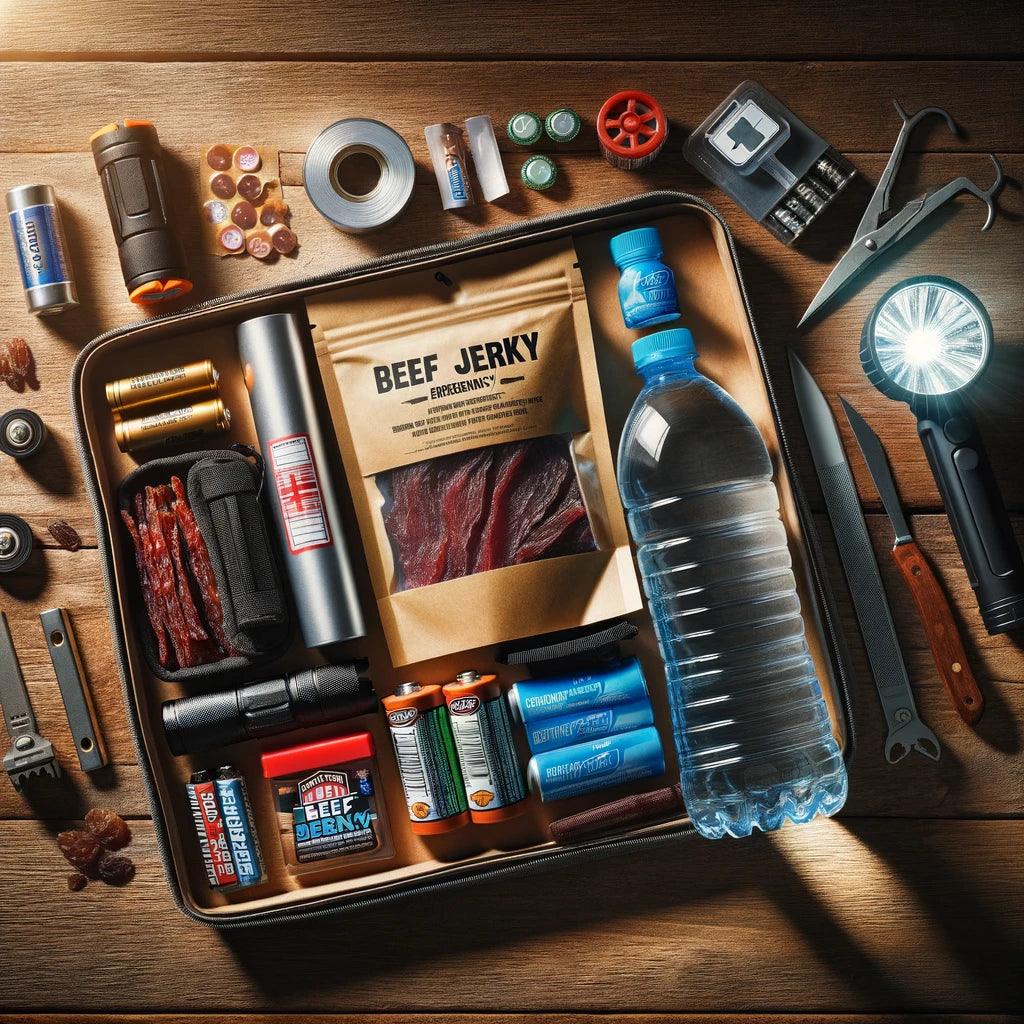Beef Jerky: A Staple in Emergency Preparedness Kits?
In the realm of emergency preparedness, where the focus is on sustaining life and maintaining health until normalcy is restored, the choice of provisions is critical. Among various options, beef jerky emerges as a popular and practical choice, often considered a staple in emergency kits. Let's delve into why beef jerky is highly regarded in emergency preparedness contexts and what makes it an essential item for survival kits.
Nutritional Value
Beef jerky is rich in high-quality protein, essential for repairing tissues and maintaining muscle mass, especially in situations that might require physical exertion. Protein also plays a crucial role in sustaining energy levels over prolonged periods. Additionally, jerky contains vital minerals like iron and zinc, which are important for immune function and overall health.
Long Shelf Life
One of the primary reasons beef jerky is a favored choice for emergency kits is its extended shelf life. The dehydration process it undergoes effectively removes moisture, creating an environment where bacteria and mold cannot thrive. Properly packaged and stored beef jerky can last for months or even years without refrigeration, making it an ideal provision for scenarios where access to fresh food might be limited.
Portability and Convenience
Beef jerky's lightweight and compact nature make it an optimal food item for emergency kits, which often need to be easily portable. Its ready-to-eat format requires no preparation, cooking, or additional water, which can be particularly advantageous in situations where resources are scarce or when mobility is necessary.
Energy Efficiency
In emergency situations, maintaining energy efficiency is paramount. Beef jerky provides a concentrated source of energy in a small package, minimizing the need for large volumes of food. Its satiating effect can also help reduce feelings of hunger, allowing for more rationed and strategic food consumption.
Versatility
Beef jerky's versatility adds to its appeal as an emergency food source. It can be consumed directly as a snack, or it can be rehydrated and added to other foods, such as soups or stews, if additional ingredients are available. This flexibility can be a morale booster, providing variety and enhancing the palatability of meals in challenging circumstances.
Considerations for Inclusion in Emergency Kits
Sodium Content
While beef jerky's high sodium content aids in its preservation, it can also lead to increased thirst. In emergency preparedness planning, it's essential to balance jerky consumption with adequate water supply to prevent dehydration.
Quality and Preparation
Choosing high-quality beef jerky with minimal added preservatives and sugars can optimize its nutritional value. For those with dietary restrictions or preferences, exploring alternatives such as turkey, bison, or plant-based jerky can ensure that emergency kits cater to individual needs.
Packaging and Storage
Opt for vacuum-sealed, individually packaged jerky to maximize shelf life and ease of distribution. Storing jerky in a cool, dry place can further prolong its usability, ensuring it remains fresh and safe to consume when needed.
Conclusion
Beef jerky's nutritional content, long shelf life, portability, and versatility make it an indispensable component of emergency preparedness kits. Its inclusion can provide a reliable source of essential nutrients in situations where traditional food sources may be compromised. As with all emergency supplies, thoughtful selection and strategic planning are key to assembling a well-rounded and effective emergency kit.
Short Answer: Beef jerky is considered a staple in emergency preparedness kits due to its high protein content, long shelf life, portability, and convenience. It offers essential nutrients vital for survival in emergency situations, requires no cooking or preparation, and is lightweight, making it ideal for inclusion in kits designed for mobility. However, its high sodium content necessitates careful water supply planning to prevent dehydration. Selecting high-quality jerky and ensuring proper storage will maximize its benefits as an emergency food source.

